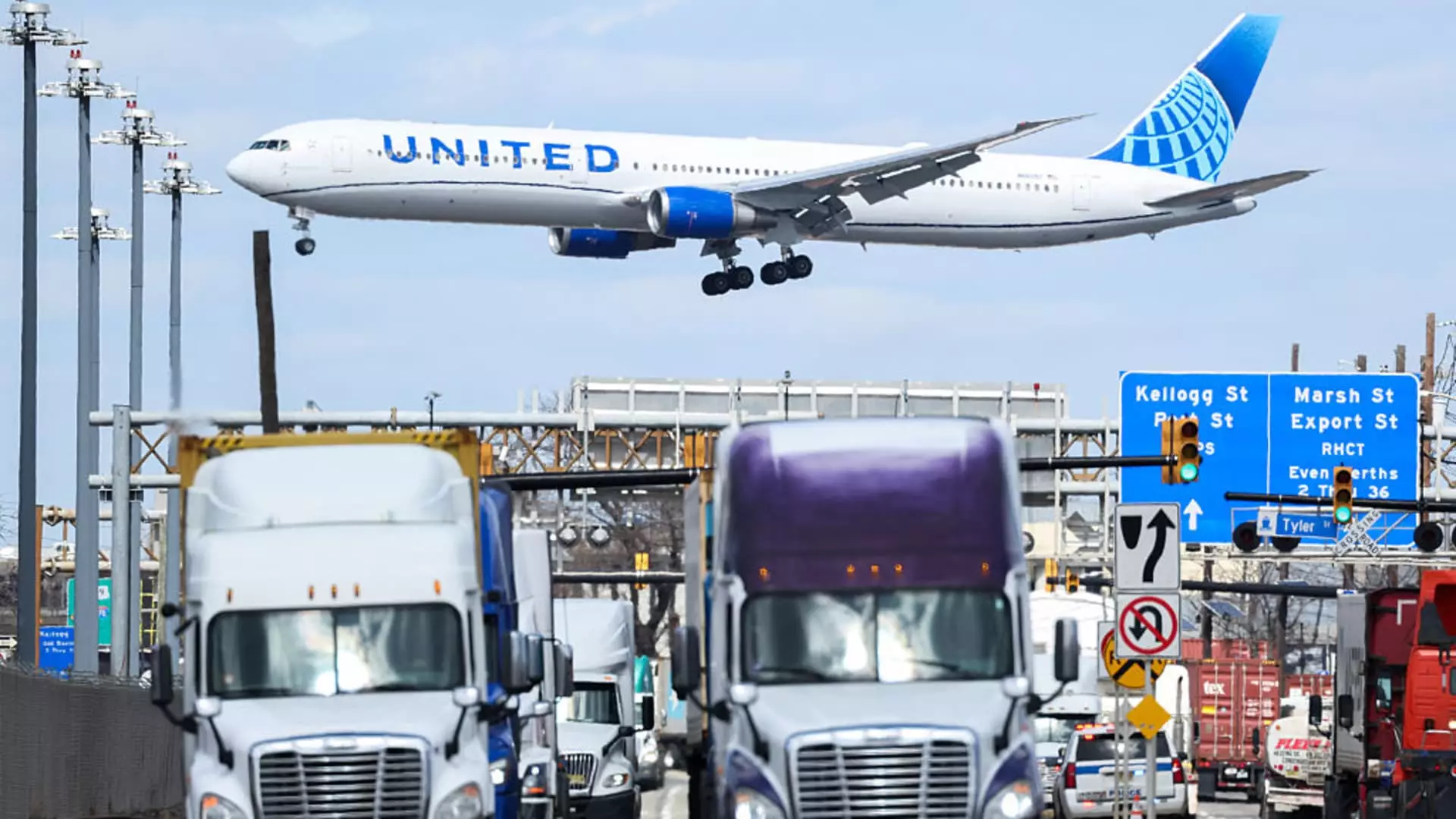United Airlines: The 5 Surprising Trends Turning Turmoil into Profit

In the ever-fluctuating world of aviation, the recent actions taken by United Airlines offer a fascinating glimpse into corporate strategy amid economic uncertainties. On a recent Tuesday, United Airlines reiterated its full-year forecast, while simultaneously hedging its bets with a secondary one, acknowledging the growing elephant in the room—the potential for a recession. The airline characterized the wider economy as “impossible to predict,” which is both an alarming and an astute admission in the current climate. By setting a lower forecast in case of economic downturn, the company displays a blend of optimism and caution that underscores its strategic approach.
The aviation industry is notoriously sensitive to economic changes. Consequently, United’s proactive measures can be deemed both prudent and necessary. It’s a clear reflection not only of the impending pressures on consumer spending but also a recognition of the shifting dynamics in the travel market itself. By implying that downturns could slash earnings to between $7 and $9 per share, United Airlines has communicated to investors that it is ready to weather the storm, but not without adaptability.
Balancing Domestic and International Demand
While trouble looms in domestic travel, United Airlines is not merely sitting back and waiting for the storm to pass. Instead, they are trimming domestic capacities by 4%, a stance mirrored by their competitors such as Delta Air Lines. This decision raises questions. Is it a bold move to preserve profitability, or a concession to waning domestic travel interest? The reality is a bit of both. Cutting back on less desirable routes may be the life raft the airline needs amidst turbulent waters.
Contrastingly, international travel seems to be on an undeterred upswing, with premium bookings soaring. It’s intriguing to ponder why consumers are willing to splash out on higher-end travel, even as economic pressures loom on the horizon. This trend could indicate a growing divide in consumer behavior: the affluent are choosing premium experiences while those with tighter budgets forgo travel altogether. United Airlines appears to be capitalizing on this disparity with a keen awareness of market demand, showcasing the company’s ability to pivot toward lucrative opportunities.
Impact on Profitability and Growth
United Airlines recently posted a significant profit of $387 million, which effectively rebounds from a loss of $124 million in the same quarter last year. This turnaround can partly be attributed to strategic positioning in premium markets, which is proving lucrative even in a climate where other aspects are faltering. The airline’s CEO, Scott Kirby, emphasizes a long-term growth plan that has enabled them to weather any demand environment. This perspective exemplifies a center-right approach, where fiscal conservatism is balanced with opportunistic growth strategies.
Despite the clouds of uncertainty looming on the horizon, United’s adjusted earnings exceeded Wall Street expectations, an accomplishment that speaks volumes about the airline’s operational efficiency and strategic foresight. However, one cannot overlook the potential pitfalls of relying heavily on international travels. As global geopolitical tensions and economic uncertainties shift, are these profits sustainable? The risk of over-reliance on premium segments without safeguarding against economic downturns must be seriously evaluated.
Consumer Sentiment and the Future of Travel
In contemplating the overall trajectory of the aviation industry, it becomes evident that consumer sentiment plays an influential role in determining future patterns of travel. United Airlines’ keen awareness of premium-cabin demand, climbing 17% compared to last year, showcases a robust alignment with changing consumer values. Nonetheless, one must critically assess whether this will be a sustainable trend or a fleeting benefit amidst ever-shifting economic conditions.
Observing United’s efforts to adapt and thrive in this economy brings to light the question of whether consumer optimism is real or a mirage in a desert of uncertainty. It is clear that consumers are willing to spend on premium experiences, yet this willingness may be a reaction to existential threats posed by the economy more than a reflection of confidence in their financial stability. The interplay between what consumers want and what is actually prudent could set the stage for future challenges for airlines if misaligned expectations lead to overcapacity or underestimating economic resilience.
United Airlines’ current status mirrors the precariousness faced across various industries in today’s world. The airline’s pragmatic approach speaks to a greater understanding of both domestic woes and international booms, while maintaining profitability amidst uncertainty. It’s these juxtaposed dynamics that frame the contours of the immediate future in air travel, underscoring a complex narrative that is anything but simple.





